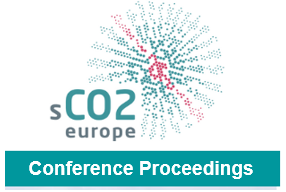Simulation and analysis of a self-propelling heat removal system using supercritical CO2 at different ambient temperatures
Innovative heat removal systems are currently investigated for use in existing and future nuclear power plants. One of them is the supercritical carbon dioxide (sCO21) heat removal system, which is based on a closed Brayton cycle with sCO2 as a working fluid.
This paper provides the design and layout of the sCO2 cycle based on assumptions developed in the project sCO2-4-NPP. The system is analysed over a wide range of ambient and steam-side conditions in ATHLET, using performance maps for the turbomachinery, which were designed recently. Bypasses are considered in the layout of the cycle to cope with special operation conditions, e.g. start-up. Different operational readiness states for the system are shown, which enable a fast start-up of the system. Air mass flow rate control is implemented to keep the compressor inlet temperature constant with controller parameters depending on the ambient temperature.
The performance analysis of the system suggests that it is a good option to operate the system at the design compressor inlet temperature of 55 °C at any ambient or steam-side boundary condition. With decreasing thermal power input, the rotational speed of the turbomachinery must be decreased to keep the system self-propelling. Turbomachinery design with a higher surge margin is preferred and different operation strategies are feasible and need to be tested in interaction with the nuclear power plant.
1sCO2 is defined as carbon dioxide at supercritical conditions with p > 73.8 bar and T > 31 °C
Vorschau

Zitieren
Rechte
Nutzung und Vervielfältigung:
Dieses Werk kann unter einer Creative Commons Namensnennung 4.0 Lizenz (CC BY 4.0)
Creative Commons Namensnennung 4.0 Lizenz (CC BY 4.0)
genutzt werden.
